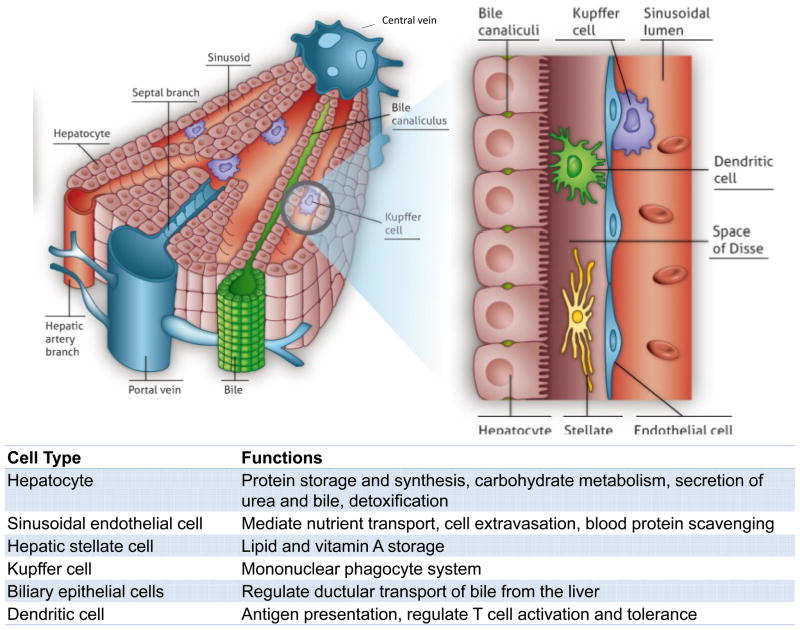Figure 1. Structure of the Liver.
The liver is the largest internal organ in the body and performs over 500 functions, including numerous metabolic, synthetic, immunologic, and detoxification processes. (A) The liver exhibits a hierarchical structure consisting of repeated functional tissue units (liver lobules). Within a lobule, oxygenated blood enters through branches of the hepatic artery and portal vein, and flows in specialized sinusoidal vessels towards the central vein. Bile, that is produced and excreted by hepatocytes, flows in the counter direction towards the intrahepatic bile duct. (B) Hepatocytes are polarized epithelial cells that interact closely with a number of non-parenchymal cells types along the sinusoidal tracts of the liver lobule. Collectively, these cellular components and multiscale tissue structures contribute to the diverse functional roles of the liver.

